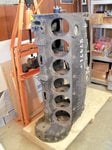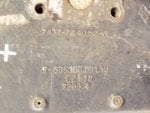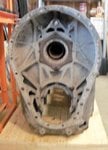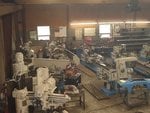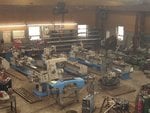Barry
Airman
I finally made time to get these shots of the DB605A crankcase in my shop resized so I can post them.
The next step for this is to determine if the crankcase is airworthy. That will require the removal of all of the original wartime paint and all corrosion that has attacked the aluminum since. As can be seen there is a light coat of corrosion over all of the interior surfaces.
The data plate for this engine has been lost. The white number painted on the outside of the casting is the engine's serial number so a new data plate will be made in due course.
Unfortunately almost all of the threaded studs have been broken off so there will be a fair amount of work involved in removing them. A trip to Vintage V12s in California may be in its future.
Meanwhile the search for DB605 parts goes on....
Enjoy....
The next step for this is to determine if the crankcase is airworthy. That will require the removal of all of the original wartime paint and all corrosion that has attacked the aluminum since. As can be seen there is a light coat of corrosion over all of the interior surfaces.
The data plate for this engine has been lost. The white number painted on the outside of the casting is the engine's serial number so a new data plate will be made in due course.
Unfortunately almost all of the threaded studs have been broken off so there will be a fair amount of work involved in removing them. A trip to Vintage V12s in California may be in its future.
Meanwhile the search for DB605 parts goes on....
Enjoy....

